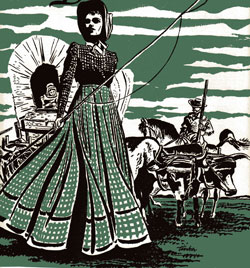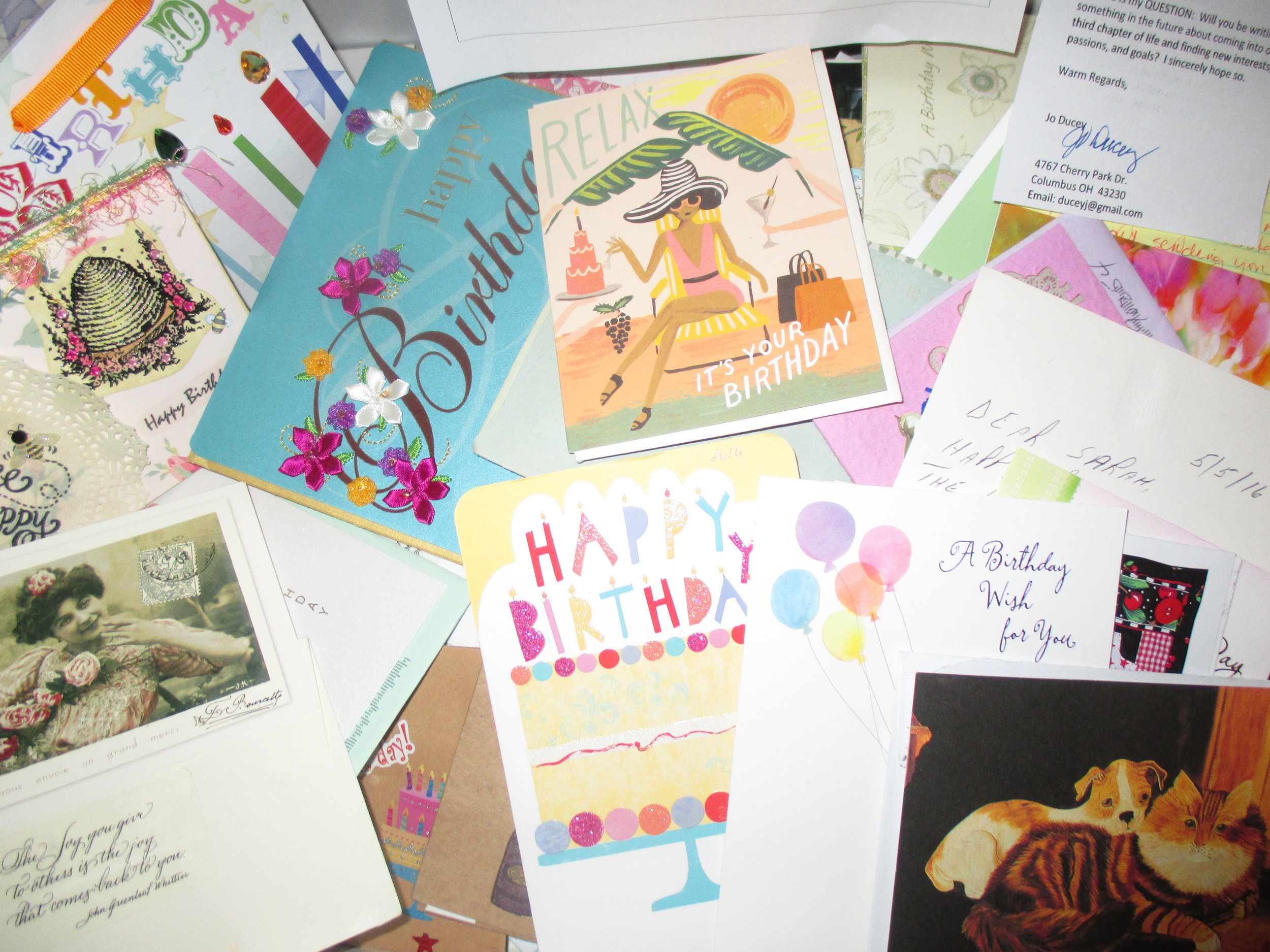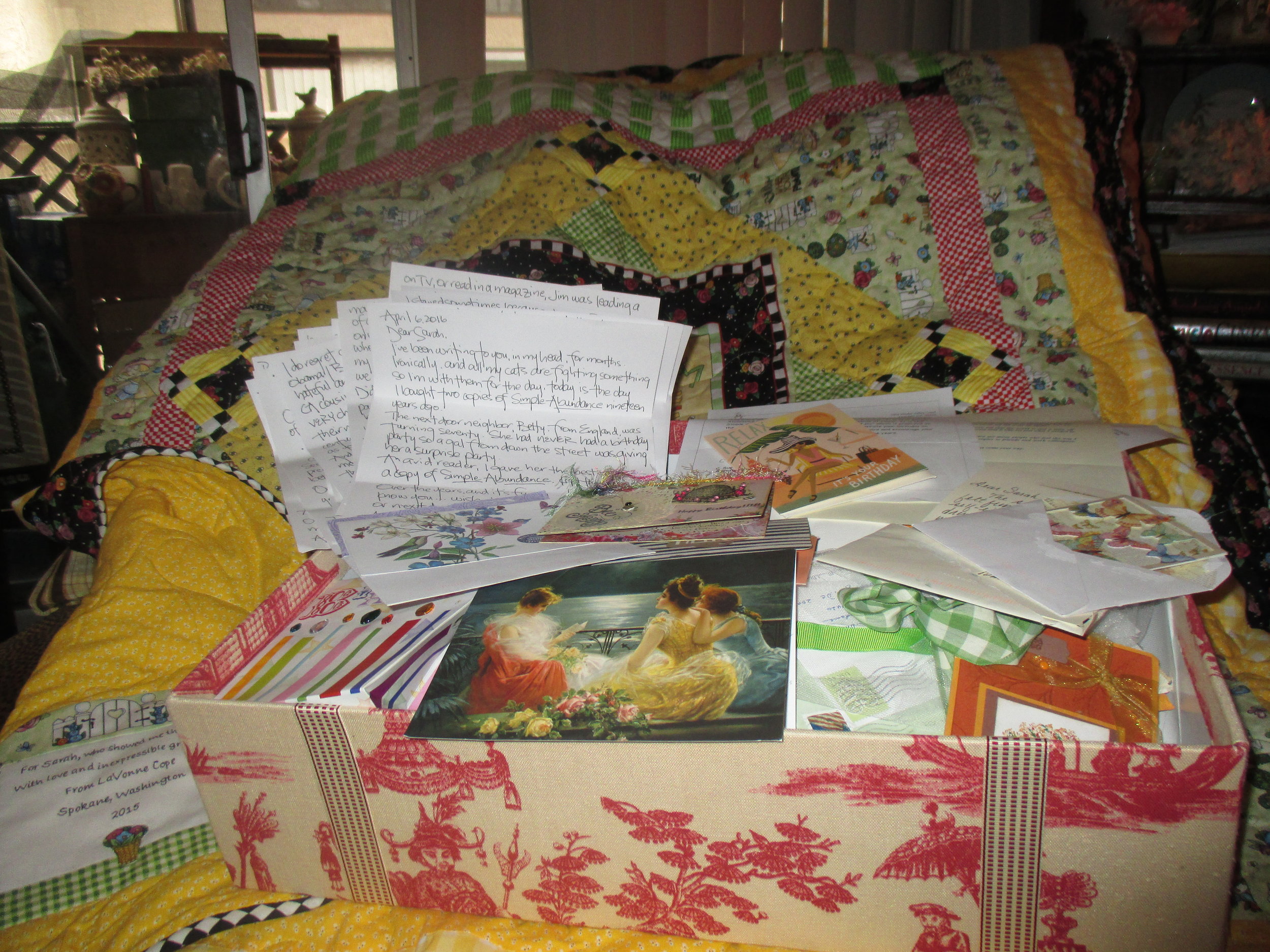There is so much more to a gift than a price tag…
--Woman’s Institute Magazine (December 1927)
I don’t think there is a woman in the world who frets about not having money at Christmas because of her own wants and needs. Why a woman will cut off her long, beautiful hair to buy her new husband a watch-chain (O. Henry, The Gifts of the Magi) or her Mother a train ticket to see her ailing Father (Louisa May Alcott, Little Women). She’ll go without, scrimp, save and even be grateful to pawn her grandmother’s finest gold and garnet necklace if it means a bicycle with a shiny red fender or the most beautiful doll will be under the tree on the morning of all mornings.
“Christmas happens in the heart, not the pocket book, so forget the fact that you think you have no money to spare for it,” House and Garden encouraged its readers in December 1942. We just need to remember and give thanks that “the diminished bank account is the mother of ingenuity. Luxurious trappings may not be yours, but you can have a glory of Christmas beauty for the cost of simple things, born of imagination and enthusiasm. Put a dollar limit on your presents and have the fun for the perfect one—a casually mentioned little something, no matter how small, that tells the recipient you’re giving of your thoughtfulness. Or put your hands as well as your heart to work and make your own. Have people close to you, for who can put a price on the companionship of those we love? Patch up an old quarrel. Write to someone far away and lonely. On Christmas day invite your friends to a covered-dish dinner….This, you’ll find, is happiness…this is Christmas….no one will ever be rich enough to buy either.”
Let the grace of Gratitude become your holiday assistant. No matter what your circumstances, Gratitude can illuminate the lustrous mother-of-pearl lining hidden in your disappointing situation. You say you’ll be alone on Christmas day because your daughter is traveling to her fiancé’s family holiday celebration? But you still have a few days before Christmas to fuss over her and isn’t it true that not so long ago, distance kept you apart for years? There’s a golden entry for the Gratitude Journal!
You can’t see your son over Christmas because he’s gotten a job in another state and will be working through the holidays? Another for the Gratitude Journal! Thank you God, he’s been looking for work in his field for over a year.
The grandchildren are across country, but you’ve just recorded a favorite holiday story in a book to surprise them with your voice and you don’t know it yet, but there’s a new computer and Skype or Facetime is on its way to you, so that you all will be keeping a Christmas custom of connection fresh, even if it is different.
“It’s the Christmas in your heart that counts. Money is only secondary at the self-giving time,” the Woman’s Institute Magazine reassured its readers in December 1927. “Think of what a box of home-made cookies, all decorated and fancily shaped, would mean to the business girl who boards or the mother too busy with home cares to make dainties for her family. Or imagine the joy of a basket of home-make jellies and sweets would give the woman who had been ill for many weeks. I even know of one woman, living on a farm, who sends every year to a daughter in the city, a business girl hungry for a taste of home things, a chicken all stuffed and ready to slip right into the oven."
And while the writing is quaint, it’s the sentiments that bring tidings of comfort and joy because they sound heart-felt for both the giver and the receiver. So here’s my Christmas gift, suggested to us by the Grace of Gratitude and a list that you may happily share. Our gifts will not cost coin but will require generosity of Spirit and time to collect our thoughts in order to bestow these one-size-fits-all-souls offerings:
The Gift of Undivided Attention
The Gift of Enthusiasm
The Gift of Creative Energy
The Gift of Simple Seasonal Pleasures
The Gift of Good Cheer
The Gift of Beauty
The Gift of Surprise
The Gift of Wonder
The Gift of Peaceful Surroundings
The Gift of Cherished Customs and New Traditions
Today let everyone you speak to or meet have the gift of your undivided attention. Let him tell his story uninterrupted until the end, even if you know it better than he does. Let her talk it over and talk it out again and if you are together, look her lovingly in the eyes and reach for her hand. Don’t rush away from a neighbor you meet in the parking lot of the supermarket; ask her how her children are doing, and how she’s feeling.
Once you start this Cosmic chain gift you’ll happily discover something absolutely amazing, something that you did not know this morning: that you have more time than you thought possible and there’s some Spiritual Undivided Attention speeding its way to you where you need it most. And the lean purse? It will stretch farther and wider than you thought possible because the gifts we all crave, can’t be bought.
Sending dearest love and always blessings on our courage,
XO SBB
















































